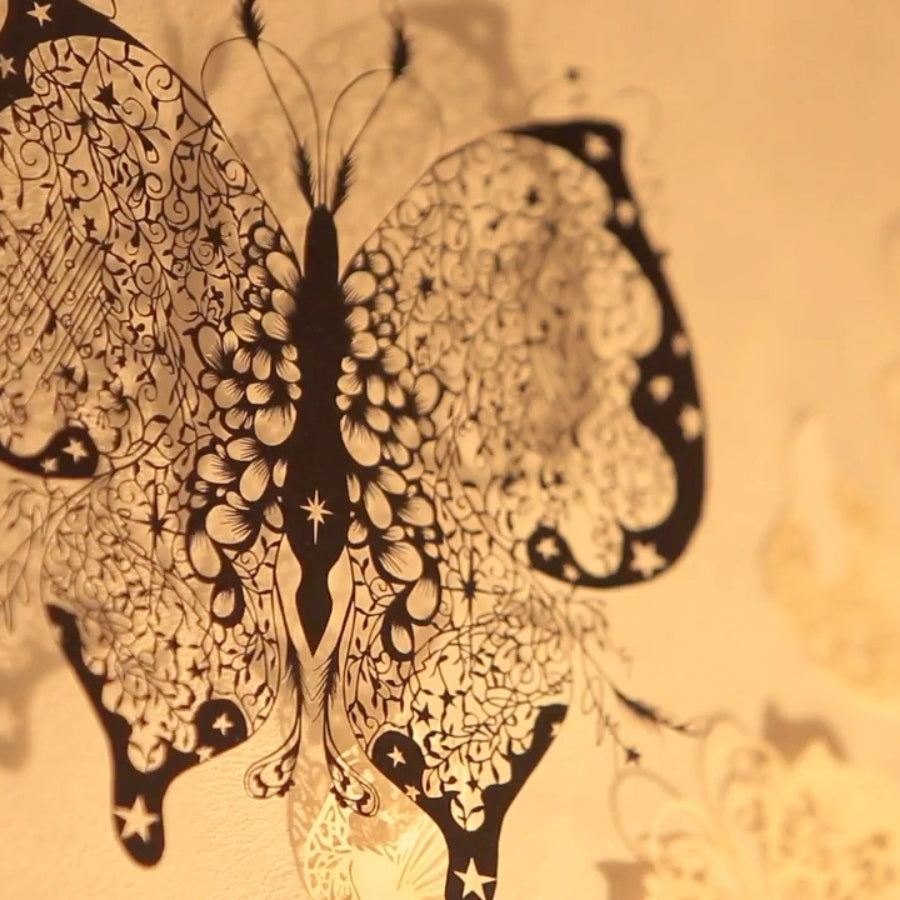
What is Kirie ?
Share
What is Kirie (Paper Cutting)?
Kirie, or paper cutting, is a traditional Japanese art form where intricate pictures or patterns are created by cutting paper. This beautiful art has a rich history that traces back to its origins in China. Let's explore the journey of kirie and its evolution.
Origins and Chinese Influence
Chinese Paper Cutting
The roots of paper cutting lie in China, dating back to the 6th century. Following the invention of paper, this art form developed and flourished, becoming an integral part of Chinese culture. Paper cutting was often used in festivals, religious ceremonies, and as decorative art in homes.
Introduction to Japan
In the 7th to 8th centuries, paper cutting was introduced to Japan through missions to Sui and Tang China. By the Nara period (710-794), kirie was already practiced in Japan. Initially, it was adopted for religious purposes and to decorate shrines and temples.
Development in Japan
-
Religious Use: Initially, kirie was used in rituals and decorations at shrines and temples, especially in Buddhist ceremonies and talismans. It was also used to create elaborate paper dolls and offerings for Shinto rituals.
-
Edo Period: During the Edo period (1603-1868), kirie became popular among common people as decoration and entertainment. Ukiyo-e artists also incorporated kirie into their works. It was during this period that kirie began to be appreciated as a form of art and craft, with intricate designs depicting daily life, nature, and folklore.
-
Post-Meiji Period: After the Meiji period (1868-1912), influenced by Western culture, kirie was recognized as part of modern art. It was introduced in schools, becoming popular among children. The integration of Western art techniques and styles further enriched the practice of kirie, allowing for more diverse and contemporary expressions.
Modern Kirie
Art and Development
In contemporary times, kirie has evolved by preserving traditional techniques while embracing new technologies and methods. Laser cutting and digital design have expanded the possibilities for intricate and precise patterns. Many renowned kirie artists have emerged, gaining appreciation both domestically and internationally. Their works often blend traditional Japanese aesthetics with modern themes and are displayed in galleries and museums worldwide.
Events and Exhibitions
Kirie exhibitions and workshops are held worldwide, allowing many to experience its beauty and skill. These events often include live demonstrations, hands-on workshops, and displays of historical and contemporary works. Festivals celebrating traditional Japanese arts frequently feature kirie, highlighting its cultural significance and artistic value.
Kirie continues to be cherished as part of Japan's traditional culture while evolving as a component of modern art. Its intricacy and beauty captivate many and are celebrated globally. The practice of kirie fosters mindfulness and patience, making it not only an artistic pursuit but also a meditative practice.